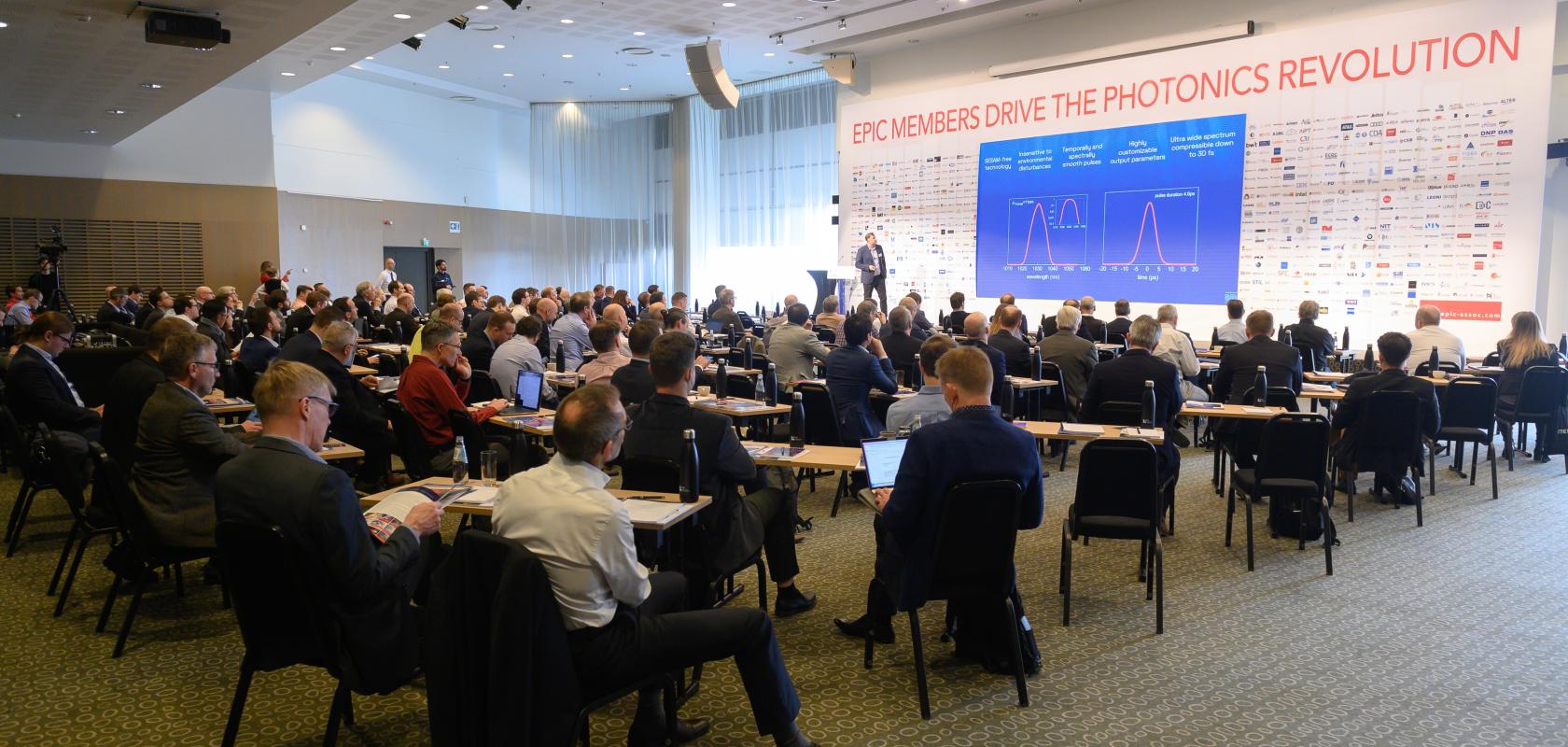The European Photonics Industry Consortium (EPIC) and the European photonics community as a whole, needs to dramatically increase its advocacy efforts in order to secure the future for the industry – attendees of the association's AGM in Vilnius, Lithuania heard last month.
Previous advocacy efforts led by EPIC to ensure that photonics remained as one of the 50 public-private partnerships of the 2021-2027 Horizon Europe framework programme, saw European photonics organisations, hundreds of photonics company CEO’s, and Nobel laureates jointly highlight the importance and impact of photonics to the European Commission and member state governments.
However, according to Gabriel Crean, senior advocacy advisor to EPIC, despite this success, the European photonics industry still needs to do much more to ensure it receives the same attention and support from the European Commision as other sectors. This will involve being increasingly vocal and deciding exactly what it wants, in specific terms, when approaching the Commission.
To demonstrate his point, he used the example of the recent European Chips Act, part of which is seeing over a billion euros directed towards the development of three microelectronics pilot lines. In comparison, at a recent meeting between the European Commission’s Key Digital Technologies partnership and the photonics community, only €20 million was announced for silicon photonic integrated circuit (PIC) pilot lines.
‘This is why advocacy for photonics is important and this is why the industry has to do more.’ he said
A successful approach
It was explained that part of the success of the microelectronics industry securing the billions of funding for its programmes came down to its key members, known as the Electronic Leadership Group taking action back in 2018, highlighting exactly what they needed in a written report on boosting electronics in Europe, and delivering it to the European Commissioner for the digital agenda at the time.
‘In the report they requested €2.5 billion for pilot lines and highlighted that they wanted to, for example: create a pan-European infrastructure; conduct testing, experimenting and innovation in the areas of neuromorphics and quantum; and that they wanted to transition from prototyping to manufacturing,’ said Crean. ‘Fast forward to 2022 and we can see how important this initial report was, in that much of its vocabulary has been carried all the way through to the publication of the Chips Act four years later: ”pan-European infrastructure; transition from prototyping to manufacturing; neuromorphic and quantum testing, experimenting and innovation” are all mentioned. Not only that, but even the more specific vocabulary of the report has been included, with FDSOI, finFETs, and 3D heterogeneous systems all being mentioned. Never before has a communication for the Commission gone into such depth.
‘And so when we think to ourselves “How did this all start? How is there now over a billion euros potentially on the table for microelectronics pilot lines, while only €20 million is available for photonics pilot lines?” It all started with an outrageous (albeit very specific) request for €2.5 billion for microelectronics pilot lines. It started in 2018 with a concept saying, “We can do this in Europe, we need heterogeneous integration, we want to create ultra-low power devices, we need FDSOI at 10nm and FinFETs below 2nm. Therefore if we, the photonics industry, want to achieve something similar in the future, we have to follow suit and start now. These things don’t happen randomly.’
Following in the footsteps of others
In order for the photonics sector to ensure its future growth and ambitions, multiple issues need to be addressed, Crean explained.
Firstly EPIC and its membership must be increasingly vocal about the strategic importance of Europe’s world-leading photonics technology for the European Union’s future digital ambitions, for the European Union's digital sovereignty and for the European Union’s security and resilience. ‘If we are quiet, resources get diverted to other sectors, that's the reality.’ he said. ‘If the Commission is not looking at photonics, then many of the ministries of member states who increasingly look to align funding in the same direction as the Commision will, themselves, perhaps not consider photonics.’
Secondly, and similarly to microelectronics, the European photonics industry needs to decide exactly how it wishes to position itself in the future, what support it needs and on what timeframe. ‘Should we have world-leading photonic integrated circuit production in Europe?’ Crean asked attendees. ‘Should we have world-class micro optics manufacturing platforms for the metaverse? Should we have world-beating photonics technologies for quantum computing? The microelectronics industry knew exactly what they wanted, and as a result are now moving forward with exceptional support. Their experience should be our inspiration. We can learn from that and need to have this ambition. With it, we can achieve anything we want as an industry.’
Crean concluded by saying that members of EPIC that would like to become more involved in the association’s advocacy initiatives for the European photonic industry should contact Carlos Lee, EPIC’s director general, for an informal discussion on how best to contribute. In the coming months, the ongoing EPIC advocacy thrust will mobilise interested parties to stimulate discussion, reflection and consensus on how best to secure a winning landscape for the photonics sector in Europe.


